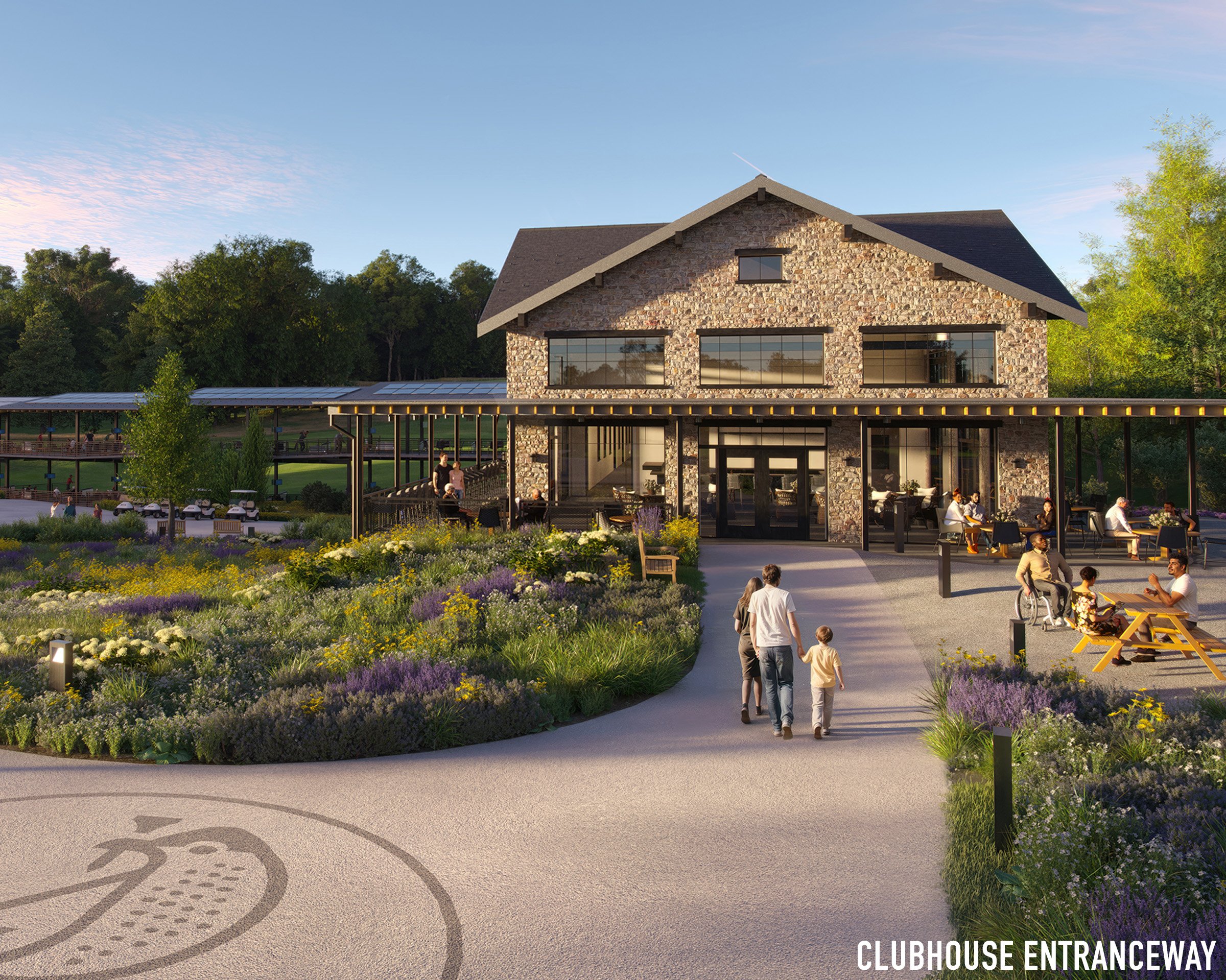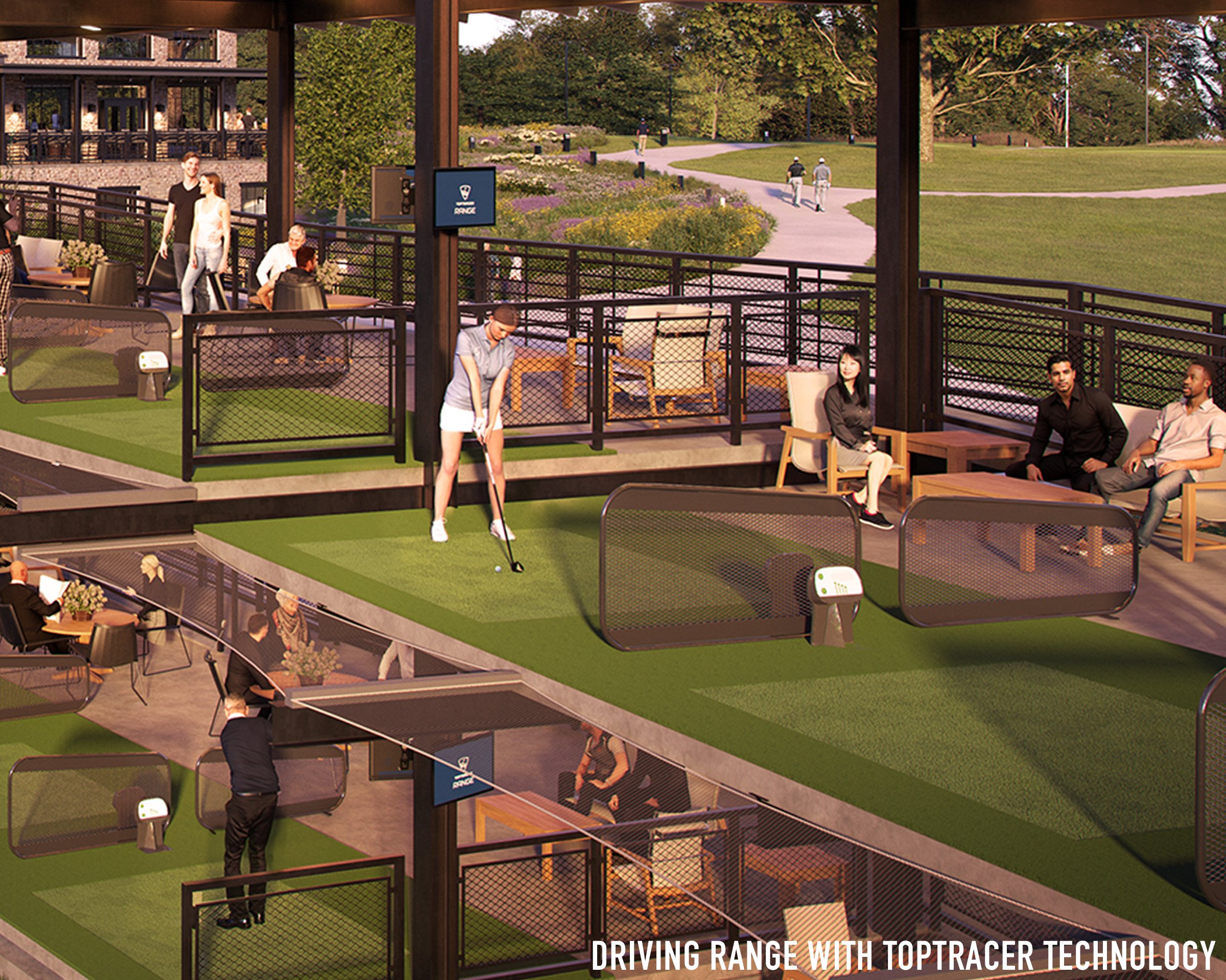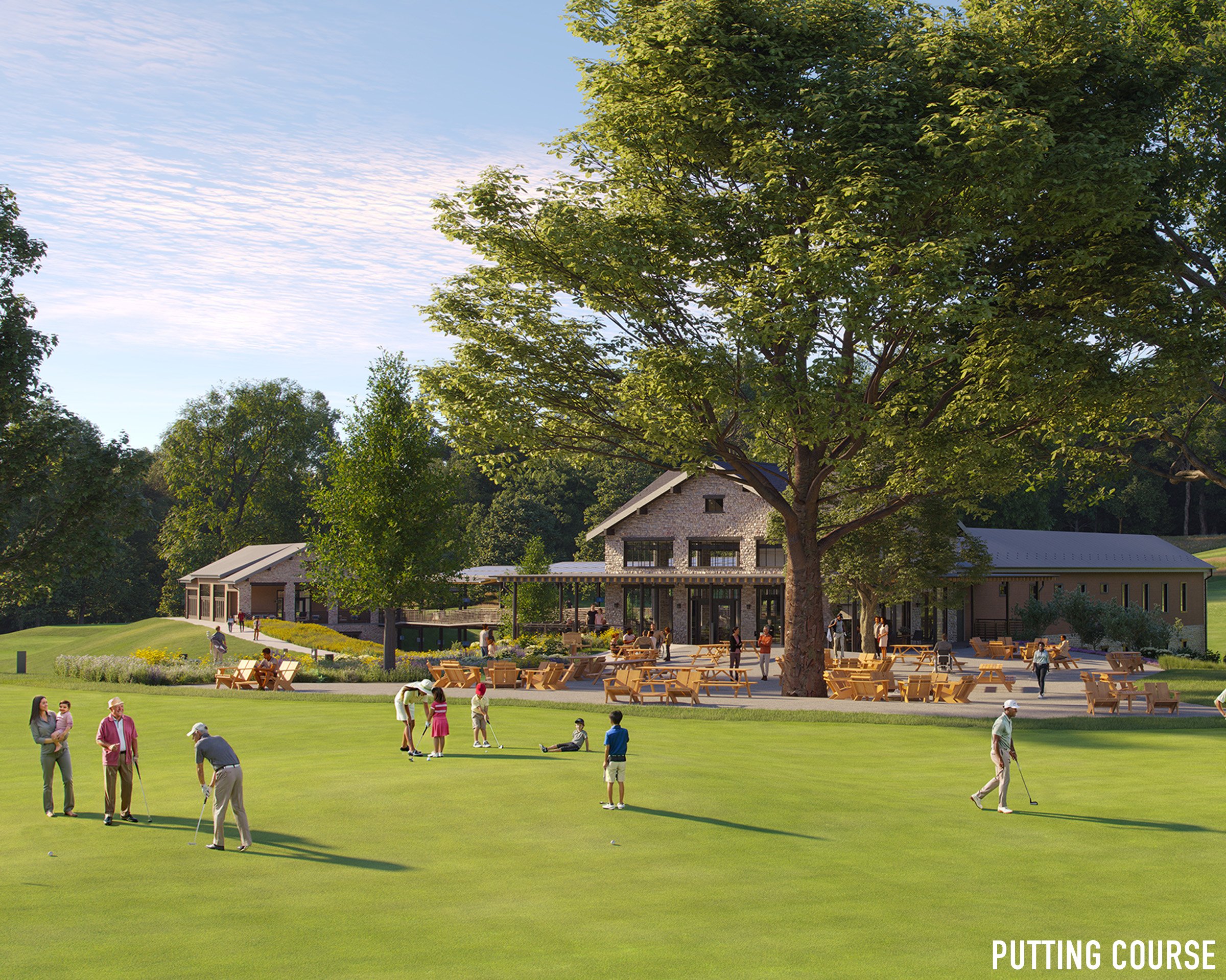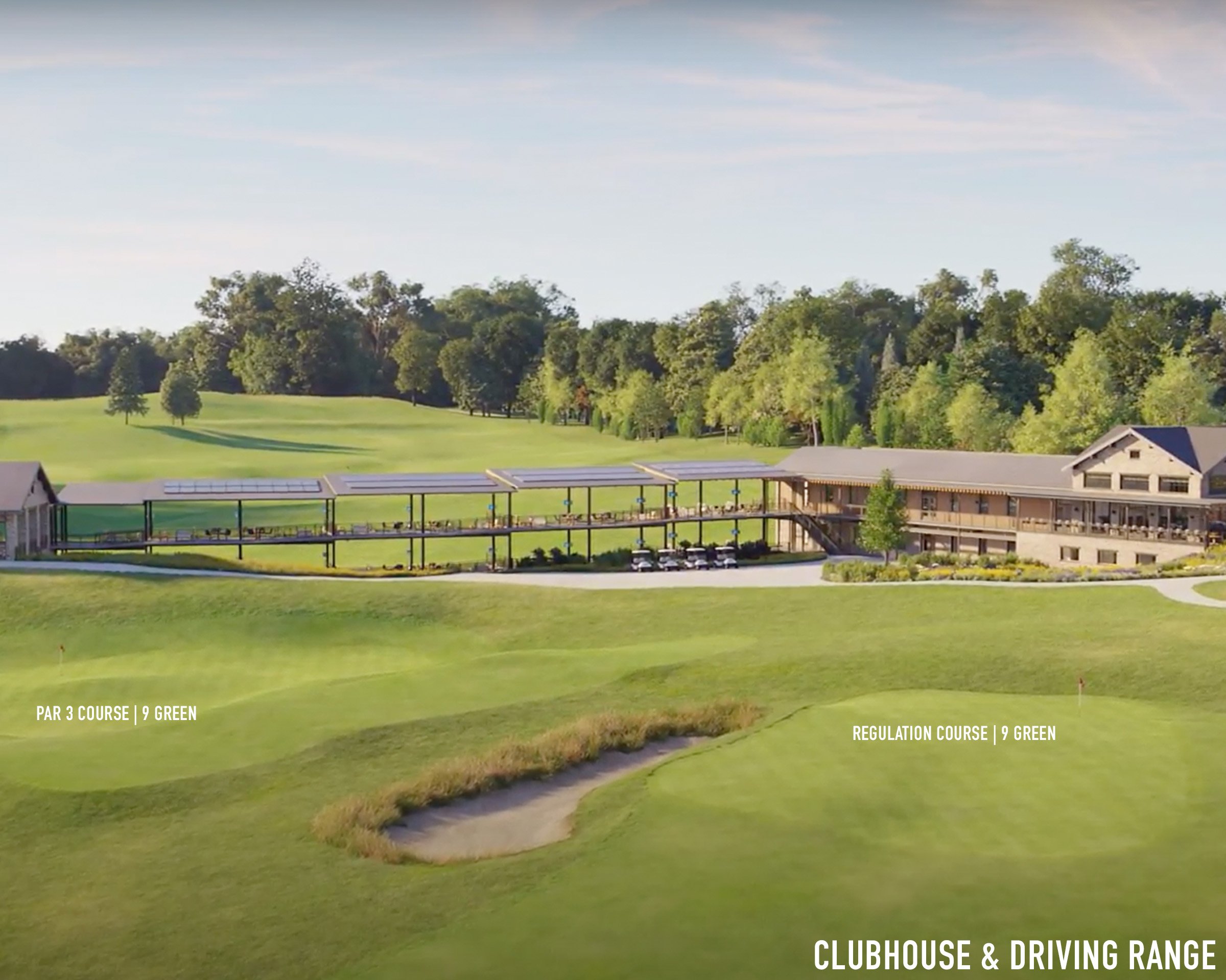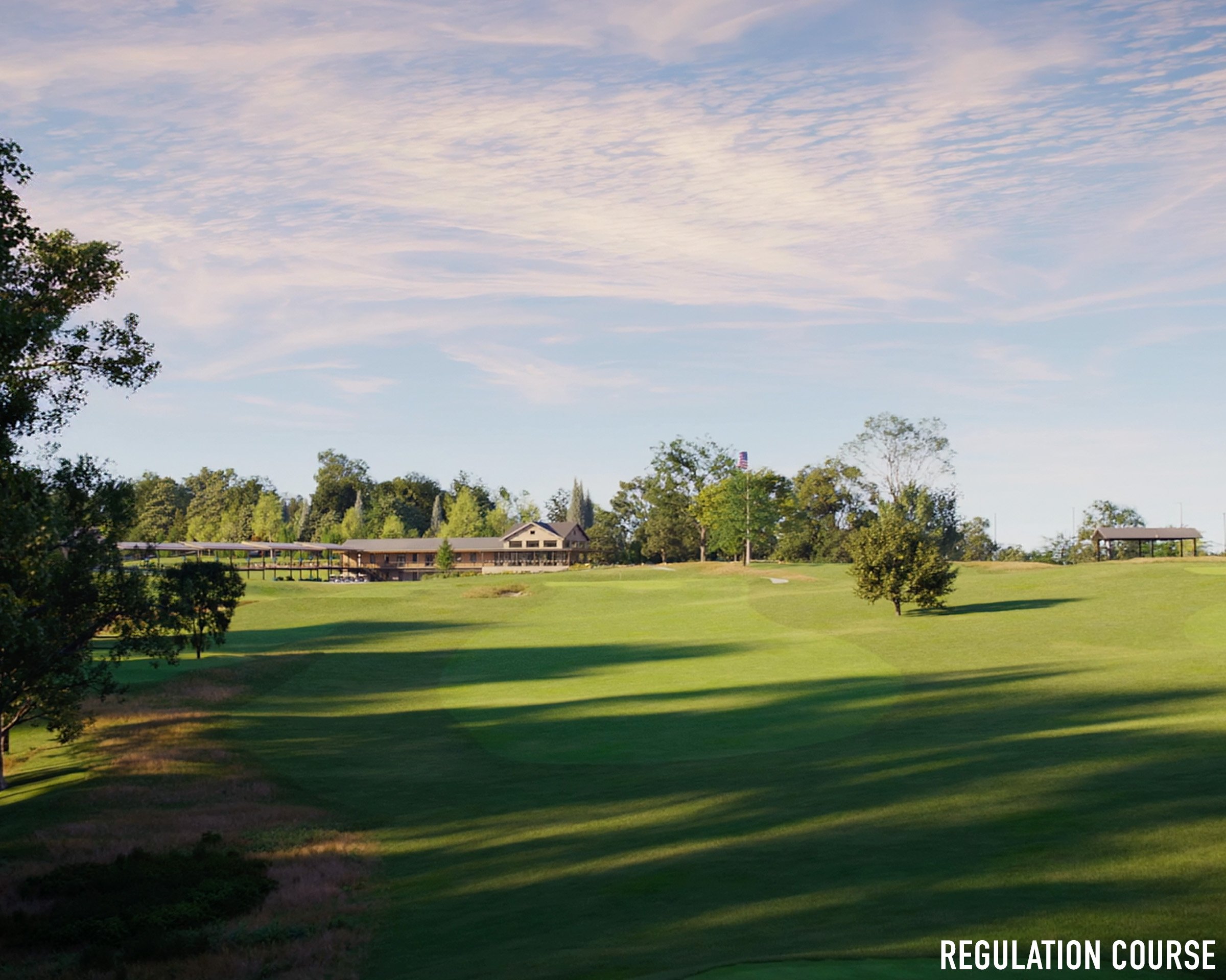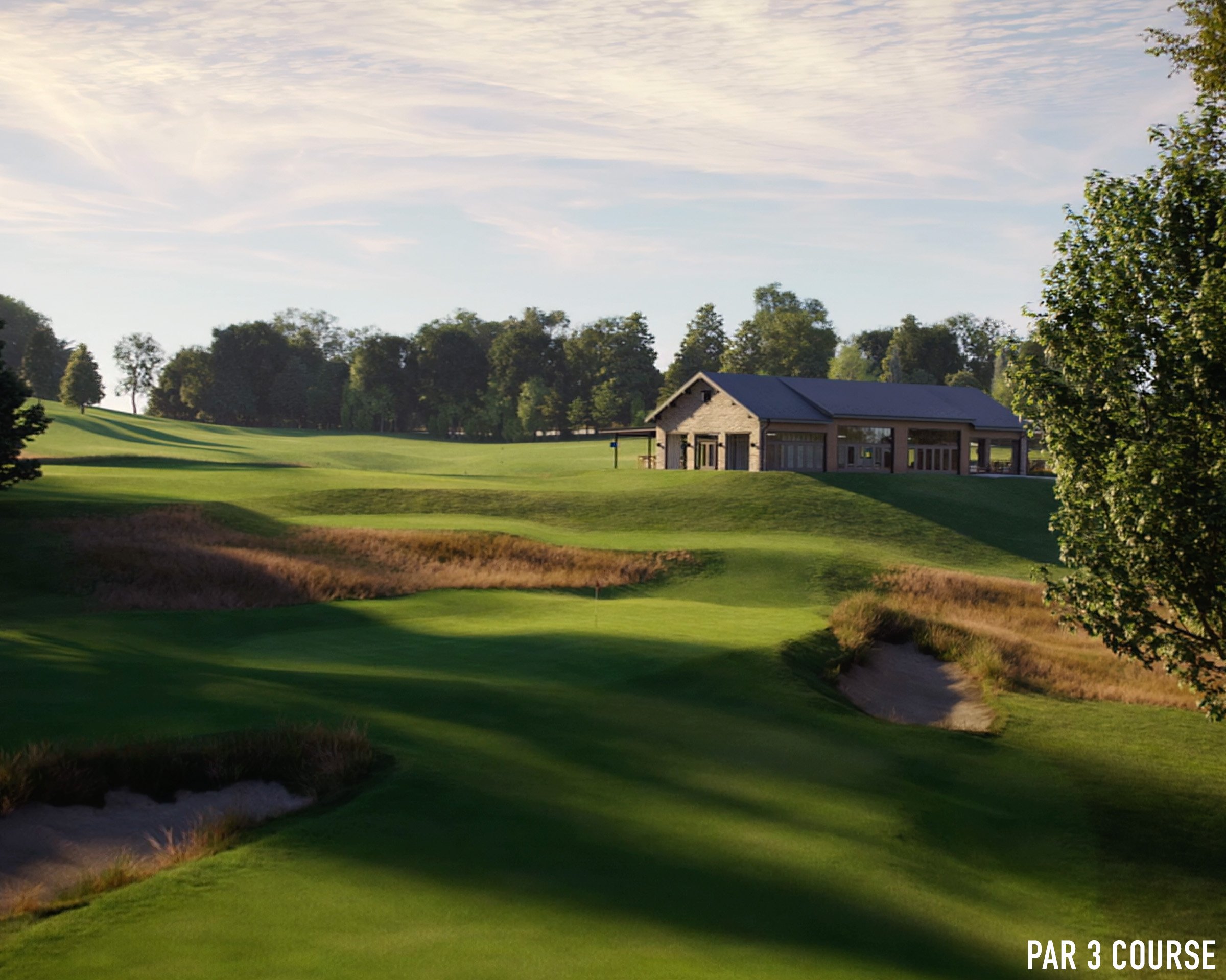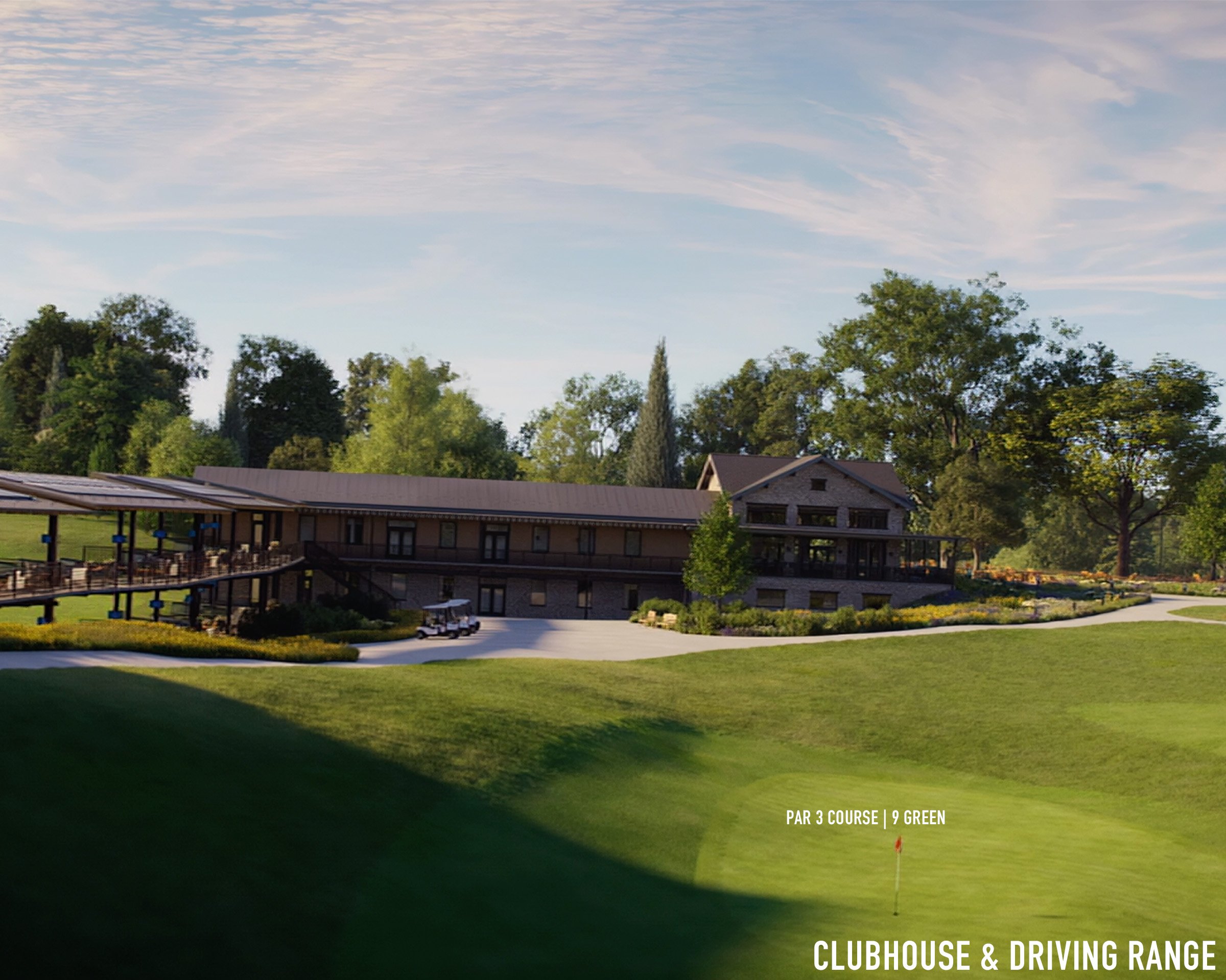OUR Vision for the Future of Rock Creek PArk Golf
National Links Trust has begun the first chapter of the Nation’s Capital Project - The Rehabilitation Rock Creek Park Golf. Rock Creek Park Golf is one of the oldest public golf courses in the country and is listed in the National Register of Historic Places. While historically significant, over the last several decades lack of investment has caused conditions to deteriorate to the point where the community’s use of the facility has drastically decreased. NLT will address this and rehabilitate the facility to become a true community asset for golfers and non-golfers alike. Economic and environmental sustainability will be key tenets to this project that will be funded entirely by NLT’s operations and private philanthropy.
By investing in this facility, NLT can increase our impact in the community and change lives through golf by expanding the reach of our programs and providing better access to affordable recreation and greenspace.
Learn More ABOUT THE PROJECT
Why Now?
A once-in-a-generation opportunity to shape the future of our city.
Rock Creek Park Golf is one of the oldest public golf courses in the United States. Built by Golden Age architect William Flynn in the early 1920s, the facility has served as an affordable, accessible golf course and community center. For its architectural and cultural significance, it has been listed in the National Register of Historic Places. Unfortunately, over the last several decades the facility’s conditions have deteriorated. Hole corridors have narrowed, turf throughout the course has become sparse, the rundown clubhouse lacks modern amenities and is not handicap accessible and as a result of all of this the facility’s impact on the local community falls far short of its potential.
NLT’s 50-year lease of the property with the National Park Service allow us to address these issues and ensures the facility will be managed with economic and environmental sustainability as key tenets. With this project, the facility will be a true community asset for golfers and non-golfers alike.
Plan Features
The project at Rock Creek Park Golf will be executed in two phases over roughly two years.
Phase 1
Clubhouse
Community Gathering Space
First Tee – Greater Washington, DC Headquarters
Restaurant
50-Bay Driving Range with Toptracer Technology
Putting Course Modeled after the Himalayas at St. Andrews
Short Game Facility
Maintenance Facility
Rain Gardens
Cistern
Phase 2
9-hole Regulation Course | Hanse Golf Course Design Project
9-hole Par 3 course | Hanse Golf Course Design Project
Multi-Use Trails for Jogging, Walking, and Hiking
Pollinator Meadow
Picnic Pavilion
Design Philosophy
NLT believes that municipal golf courses should be accessible to the entire community, while also providing beautiful green space for communities to come together.
Our work has been informed by three pillars:
Create engaging, environmentally and economically sustainable facilities where golf is affordable and fun.
Transform facilities into multi-use community spaces that celebrate the city’s unique history.
Promote access to golf for golfers of all ability levels.
Project Outcomes
The rehabilitated Rock Creek Park Golf facility will impact our community and change lives.
A rehabilitated Rock Creek Park Golf facility has been envisioned to better serve everyone in our community. Our project will result in:
Greater impact on our community and more lives changed through increased reach of NLT programs - like our workforce development and caddie program - and increased access to affordable recreation and green space for those in the community.
Increased economic activity will result in 60 new jobs for local residents, increased investment in community programs, and will allow the landscape to be sustainably managed to promote forest health, reversing decades of deterioration.
Environmental sustainability through requiring fewer resources for turf maintenance, providing native habitat for wildlife, and more.
Increased reach of community partner programming - like First Tee - Greater Washington, DC - who will have a permanent headquarters in the clubhouse.
Pedestrian access to the facility and better connection to the city’s public transportation system.
Accessible recreation for non-golfers like our multi-use jogging, walking, and hiking trails, a picnic pavillion, and putting course modeled after the Himalayas at St. Andrews
Fun, engaging golf courses for golfers of all ability levels to enjoy.
Sustainability
A plan for economic and environmental sustainability.
Our goal is to create a true community asset for golfers and non-golfers alike, increasing the impact we can have our community and the number of lives changed through golf in our nation’s capital. Environmental sustainability has been a point of emphasis throughout the design process and will remain so through construction and operations. Increased economic activity at the facility will allow for significant focus and investment in environmental sustainability initiatives. Once completed, the management of the facility will set a national standard for environmentally-friendly golf courses. Environmentally-sustainable aspects of this project include:
Long-term net gain in tree canopy. Since May of 2024, NLT has continued to refine the proposed rehabilitation plan consulting with members of the community and industry experts. With this updated plan, we have reduced the tree canopy to be removed (now 5.8 acres vs. 6.1 in May) and maintained the tree canopy to be added or supplemented (7.1 acres). To get to this, we will plant approximately 1,500-2,100 trees (3:1 for every healthy native tree removed).
12.3 acres of meadows added including 5.7 acres of pollinators, significantly increasing the amount of rare, critical meadow habitat in Rock Creek Park. These planting acreages have increased since May of 2024. In May of 2024, these estimates were 11.1 acres of meadows and 4.5 acres of pollinators.
Reuse of felled trees for furniture, countertops, siding, trim, and decking in our project and others on NPS land.
Significant reduction in soil erosion and sediment run-off into Rock Creek through rain gardens, healthy turf coverage, meadow grasses, and other stormwater management techniques.
Solar and Geothermal energy used to power operations.
Fewer resources used in golf course maintenance due to new turf grass selection, increased air flow, and sunlight.
Capture and use of rainwater that falls on-site through cistern.
Invasive plant management program that will protect forest edge from overgrowth of non-native plant species.
Healthy, native habitats created for wildlife.
Support the Project
This project will be driven by the community and built for the community.
This project will be funded entirely by NLT operations and private philanthropy, so over the next several years, we need the support of our entire community. Together, we can make this vision become a reality.
PRoject FAQs
Providing our community with a deeper understanding of our project.
-
We have seen this statistic floated around and we want to offer a correction.
Since May of 2024, NLT has continued to refine the proposed rehabilitation plan consulting with members of the community and industry experts. With this updated plan, we have reduced the tree canopy to be removed (now 5.8 acres vs. 6.1 in May) and maintained the tree canopy to be added (7.1 acres). To get to this, we will plant approximately 1,500-2,100 trees (3:1 for every healthy native tree removed).
These specific efforts are in addition to the many environmental sustainability initiatives we will undertake at the rehabilitated Rock Creek Park Golf. These initiatives include planting 12.3 acres of meadow habitat to increase biodiversity of the property, using solar and geothermal energy, capturing and reusing rainwater for irrigation, and using the increased revenue to sustainably manage the forest and meadows.
-
As it stands, Rock Creek Park Golf is not a viable facility. Decades of deferred maintenance have resulted in the golf course barely being playable due to poor turf conditions. In fact, when National Links Trust took over in October of 2020, only nine holes were open as the back nine was completely overgrown. The lack of sunlight and airflow throughout the course, resulted in patchy grass coverage prone to erosion and sediment runoff. Tree removal will promote healthy turfgrass, providing quality playing conditions while reducing the need for chemical and other inputs and reduce erosion and runoff. Tree removal will also restore the historic landscape as recommended by the NPS in its Cultural Landscape Report (which governs the treatment of landscapes on the National Register of Historic Places) which notes the pastoral nature of the property when originally laid out by William Flynn. Tree removal is necessary to restore the architectural, historic, and cultural value of the landscape and ensures that the course can be a maintained in way that is attractive to all levels of golfers. The end result will be a facility that is economically viable, that will be able to actively manage the landscape and give back to the community through programming.
-
This information is incorrect. Rock Creek Park is federal land, so the designation of heritage trees does not apply. This specific designation refers to trees over 100 inches in circumference.In our project, only 57 trees of this size will be removed (of which 20 are either invasive or in poor condition). This information comes from a comprehensive tree survey performed by Coastal Resources, Inc. - a leader in providing natural resources management services for the Mid-Atlantic region for more than 40 years.
-
Driving ranges are an essential tool for introducing people to the game as they are less difficult, less time consuming, and less costly to use than playing a round of golf.
The new driving range at Rock Creek will also greatly contribute to the facility’s bottom line. As an example of the importance of a driving range to the economics of our golf courses, the driving range at East Potomac currently generates over 25% of the total revenue for our entire three course operation. The revenue from the Rock Creek driving range will allow National Links Trust to plant trees, install and maintain much needed meadow habitat, actively remove invasive plants, create new jobs for District residents, and run programs like the Jack Vardaman Workforce Development Program.
-
This concern has been a point of emphasis for NLT throughout the design process and we have continued to refine our design approach over the last several weeks and months. As of August 2024, our proposed plan is as follows.
Exterior lighting for the clubhouse, parking lot, driving range and pavilion structures, and the putting green meets NPS Natural Sounds and Night Skies Division guidelines. These guidelines state that light should only be used where it is needed, when it is needed, use the minimum level of lighting necessary, use shielded fixtures, and warm colored light. DarkSky International guidelines on lighting fixtures was implemented on all exterior lighting with the exception of the driving range.
In regards to Joyce Road and the 16th Street Pedestrian path, lighting along Joyce Road has been reduced and only includes lighting at the pedestrian crosswalk areas. This will reduce the overall site lighting. All the site lighting fixtures are DarkSky approved (and all temps are specified at 2700k).
At the clubhouse The pendants and wall brackets used on the outside of the clubhouse are full cutoff and allow no light above the horizontal. Similarly, the wall mounted downlights used above doors on the maintenance building and the lower level of the driving range pavilion are similarly full cutoff. These fixtures are not officially DarkSky approved but meet DarkSky requirements. The pendants used under the roof of the driving range pavilion and the wraparound striplights used for the lower-level practice tees for the driving range are not full cutoff, intentionally selected to provide light on ceiling surfaces for a brighter, less shadowed appearance without using additional lights to separate the downlight from the uplight components. All of these lights have a roof over them and are intended to be turned off whenever the facilities are not in use.
At the short game practice area, lighting has been removed from the project scope to reduce costs and overall site lighting.The practice putting green will be lit by a 2700k DarkSky approved fixture and will match those used in the parking areas. This change will reduce the number of different fixtures used on site and reduce obtrusive light by specifying a 2700k downlight.
At the driving range, the initial design for the driving range’s lighting aimed to minimize illumination. To achieve this, TopTracer ball tracking cameras were integrated into the design. This technology enables lighting to be restricted to the first 55 yards, instead of the entire 250-yard range. The cameras capture the ball’s trajectory within this shorter distance and then project a simulated flight path onto a computer screen at the golfer’s station. This necessitates directing the ground-level lighting upwards, which contradicts one of the principles of sustainable night lighting. Since the fixtures are installed at ground level, the glare from the lights will not be visible to the surrounding areas of the golf course. The topography of the range, together with the surrounding vegetation, helps to contain the light. Additionally, the berm lights emit a very warm color temperature of 1900K, lacking the blue spectrum, which makes them environmentally friendly.
Considering the golf course’s proximity to 16th Street, adjacent neighborhoods, and its location just north of the Rock Creek Park Tennis Center—which uses non-sustainable floodlights until 10 pm nightly—the city’s existing elevated sky glow suggests that a minimal amount of warm-colored lighting on a timer would not be inappropriate for this area.
We have further developed our lighting plan for the driving range over the last several months. We found a ball tracing camera that requires 70% less lighting to track the ball. The design will be adjusted for the incorporation of this camera. The project team is working with NPS Natural Sounds and Night Skies Division on developing a schedule for the lights that will mimic the natural cycle. They will accomplish this by having the lights scheduled to go off between civilian twilight, and astronomical twilight. Interpretive and educational materials will be developed to explain this approach to visitors along with other sustainable night sky best practices.
-
As a young non-profit organization, we did what we believe is best practice – trust the experts and ask those who are more experienced. This starts with the National Park Service who have been our steadfast partners in this process. It also includes experienced contractors who we have hired to help navigate the compliance and approvals process.
-
Yes. We are a non-profit organization, and our goal is to deliver on our mission without passing the costs associated with the projects onto our customers. Affordability is a central tenet to our mission and will always remain so. We believe in maximizing accessibility to the game and doing what we can to lessen financial barriers is crucial to this. We do not currently have projected prices but given our current commitment to affordability at all three of our courses, we know our community trusts our intentions. Additionally, we have partnered with Youth on Course, an organization that provides access to golf for juniors at $5 per round.
-
No. As a result of this project, there will actually be less fertilizers and chemicals required to maintain turf at the facility. This is due to increased sunlight and airflow on the turf due to healthily maintained forest edges and using modern turf grass that requires fewer inputs.
-
Currently, the facility contains three distinct vegetative areas: maintained turf, degraded forest, and a small amount of unmaintained meadow area. Following the project, there will be five distinct and well-maintained vegetative areas: maintained turf, healthy forest, pollinator meadow, native successional meadow, and native grass meadow. The introduction of intentionally established pollinator and native meadows will actually increase the diversity of habitat on the site and therefore increase biodiversity.
NLT will use the revenue from the improved offerings at the facility to actively manage the entirety of the landscape led by the dedicated maintenance team and supported by NLT community volunteers. This is work that we, along with the Rock Creek Weed Warriors, have been doing at a small scale for the last few years, and we are excited to greatly expand the scope of this management.
-
As a result of increased revenue at the facilities, NLT will fund the planting and maintenance of these crucial meadow vegetative areas. The expanded maintenance crew will oversee much of this work much as they do at golf courses all across the world where managing meadows and forest edges is common practice. For context, the current revenue of the course barely supports a maintenance staff of two people but, after the renovation, it will support a staff of at least ten people. When appropriate, we will supplement this core effort by partnering with local environmental organizations, engaging with our volunteer community, pursuing grants and other private fundraising, and hiring third-party invasive management experts where necessary.
-
A number of factors are in play here. Restoring the original front nine is an impossibility. When Military Road was expanded in the 1950s, three Flynn holes on the front nine were lost and a number of others were combined into the nine that are there today. Due to decades of neglect, the back nine has become almost entirely overgrown with some corridors narrowing to such an extent that the tree canopy from either side almost touches. Restoring these nine holes was an option that was seriously considered but ultimately, NLT decided not to do this as it would require even more extensive tree removal (to ensure adequate playability and turf conditions) and less biodiversity than the current plan.
Instead, we propose to convert some of these corridors into much needed meadow to increase habitat and biodiversity for the site and for Rock Creek Park as a whole. A par 3 course is proposed for the other unused corridors on the back nine as this will allow golfers to play in and amongst the trees with minimal tree removal as the maintenance footprint of each par three is a fraction of a regulation hole.
The end result of this process is a plan that includes A) a regulation course using the corridors and green sites selected by Flynn that highlights both the pastoral nature of the historic front nine (holes 1-5 on the proposed course) and the more wooded back nine (holes 6-9 of the proposed course), B) a par 3 course using the corridors and some of the green sites from Flynn’s original design while minimizing maintained turf grass area amongst the trees, C) a driving range that provides the economic engine to fund community programming and comprehensive maintenance of the facility, and D) an ecologically diverse and healthy landscape throughout the property and specifically in the corridors of long-unused Flynn holes. While not a complete restoration, we believe that the plan faithfully pays homage to Flynn’s use of the property.
-
It is important to note that this project comes at zero cost to taxpayers. NLT has taken on the responsibility of paying for this project through private philanthropy and operations.
-
A rehabilitated Rock Creek Park Golf will provide free or low-cost recreation options and employment opportunities for area residents, as well as access to our workforce development program and college scholarships for kids and teens in the community. In addition to affordable golf, a driving range, and restaurant, there will be a number of free recreation options including a putting course (think miniature golf but on grass!), multi-use trails, beginner golf clinics, and a picnic pavilion. It will allow those who do not play golf to come to an inclusive facility and have access to greenspace.
-
For kids and teens, we will establish a Jack Vardaman Workforce Development Program cohort and offer both internship and caddie positions. As a result, even more kids and teens from the community will learn valuable job and life skills and be shown a pathway to full college scholarships through the Western Golf Association’s Evans Scholar Program. We produced our first Evans Scholar through the Vardaman Program this past year – a first-generation college student who otherwise would not have been able to afford college. NLT has also partnered with First Tee – Greater Washington, DC to provide increased space for their programs as a result of this project. Through this, they will triple the impact they have on kids and teens in the community. Additionally, NLT will host free clinics to introduce youth to the game on a regular basis.
-
We have highlighted our sustainability initiatives on this page. In addition to these, we want to highlight how we will reuse felled trees in an effort towards carbon sequestration. Chips from these trees will be used on-site for soil augmentation and plantings, and NLT will partner with Baltimore Fallen Lumber to produce 97,000 board feet of lumber to be used architecturally and for furniture. The voluntary planting of 1,800 – 2,400 trees will further address this issue as young forest sequesters more carbon due to density and rapid growth.
-
Our plan results in significant reduction in soil erosion and sediment run-off into Rock Creek through rain gardens, healthy turf coverage, meadow grasses, and other stormwater management techniques.
-
This project uses the DC Bird-Friendly Act - that goes into effect October 2024 - as a baseline and goes above and beyond to design an extremely bird-friendly facility due to its location. All exterior glazing in this project will feature a bird-friendly glass solution with a permanent visual marker on the exterior surface of the glass. The spacing pattern used for this has been tested by the American Bird Conservancy to meet a threat factor of 15, well within the required maximum 30 threat factor as determined by the DC Bird-Friendly Act.
-
No, this is incorrect. By virtue of a rehabilitated Rock Creek Park Golf being financially viable, NLT will hire an expanded maintenance team (at least ten full-time employees as compared to two right now) and employ third-party experts where applicable to manage these aspects of the project as is standard practice in the golf industry. NLT will engage the community periodically to participate in the establishment and maintenance of the meadows and forests for events with educational and community-building purposes, but will not rely on volunteers for the consistent, technical and significant work required for them to be successful.





